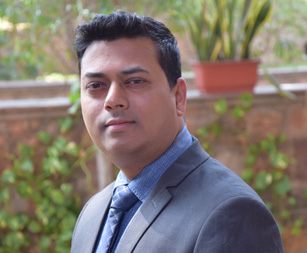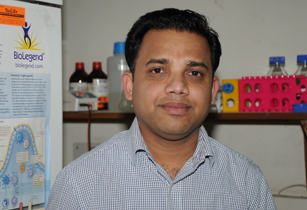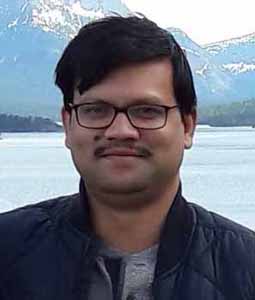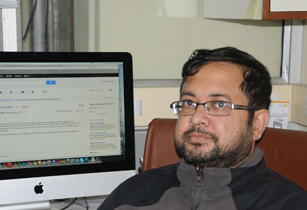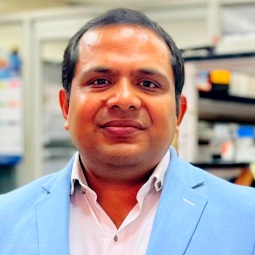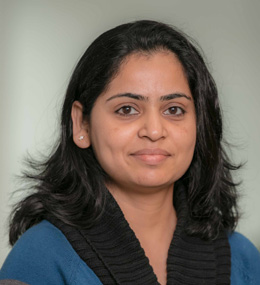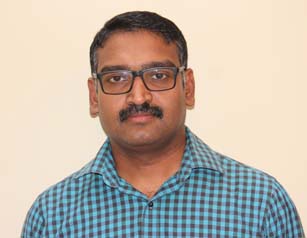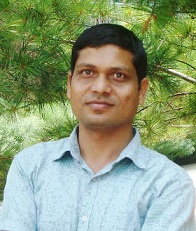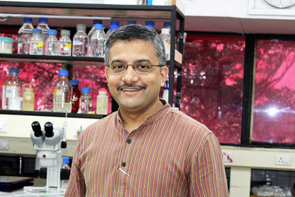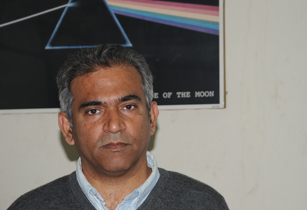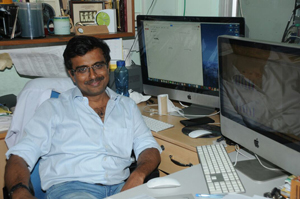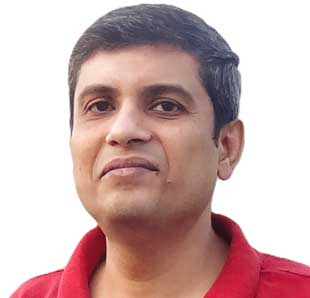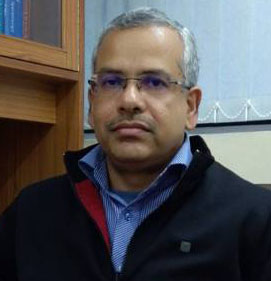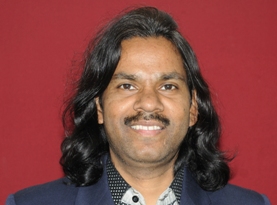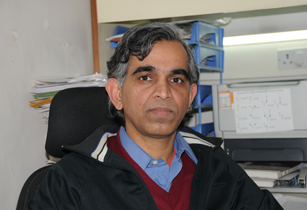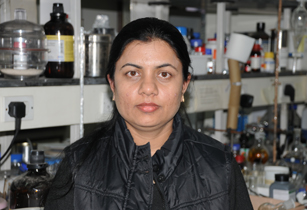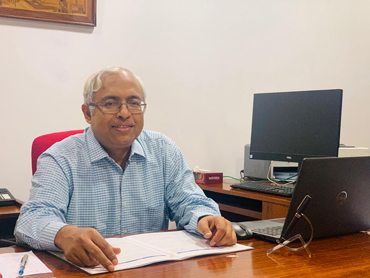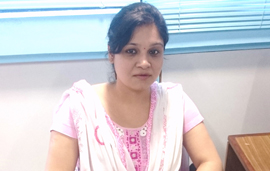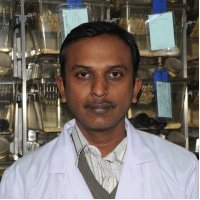Dr. Monica Sundd
Structure-function relationship studies, protein structure, interactions, surface energetics, binding studies using NMR
Projects: Structure-function relationship studies on the fatty acid biosynthesis pathways
Fatty acid biosynthesis pathway (FAS) has been regarded as an important drug target against several tropical diseases, owing to the remarkable structural and functional differences between their proteins and the host. Most microorganisms synthesize fatty acids via a type II pathway, while their human counterpart synthesizes using the type I pathway. In the type II pathway, fatty acids are synthesized by multiple enzymes catalyzing different reactions, whereas in type I pathway, fatty acids are synthesized by one single multidomain, multifunctional fatty acid synthase, each domain catalyzing a particular reaction. Interestingly, ACP’s of type I and II pathway share a similar fold, though differ remarkably in their mechanism of function. The primary function of ACP is to shuttle the lengthening acyl chains to the catalytic site of the FAS enzymes. It is expressed as an apo protein (inactive), and modified to holo-ACP (active) by the transfer of a 4’-phosphopantetheine moiety (4’-PP) from coenzyme A (CoA) to a conserved serine residue, Ser 36/37, ACP synthase acting as a catalyst. The acyl chain gets covalently tethered to the terminal cysteamine thiol of the 4’-PP prosthetic group, which in turn transfers the acyl chain to the respective enzymes during elongation. The acyl carrier protein functions in a very different way in the type II pathway, and type I. Structural studies have shown that the hydrophobic cavity accommodates the growing acyl chain in the type II pathway, which expands with increasing length of the acyl chain, while the type I ACP does not. However, a few questions still remain unanswered viz. how are the acyl intermediates recognized by their enzymes. Moreover, in type I fatty acid biosynthesis pathway, the mechanism of protection of the acyl chain by ACP still remains elusive. Yeast, also belongs to the type I pathway, but its ACP can partially sequester the acyl chain, by a mechanism that remains elusive. To address these, and several other questions, we are trying to understand the structure and interactions of some key proteins of this pathway from E. coli, P. falciparum, Leishmania, yeast and human using NMR. We hope, that understanding the structural features that dictate ACP function and its interaction with other enzymes, could offer new avenues for inhibitor design.
In Leishmania, and other eukaryotes, fatty acid biosynthesis occurs in the mitochondria. Apart from synthesizing fatty acids, an important role of this pathway is to supply precursors for lipoic acid and biotin synthesis. Lipoic acid deficiency is associated with a myriad of disorders in human's, underscoring the need to understand the pathway at the molecular level. Thus, another major interest of the lab is to understand the structure and function of the enzymes involved in the synthesis of lipoic acids, and posttranslational modification of acceptor proteins in Leishmania, E. coli and human.
Rashima Prem, Debodyuti Sadhukhan, Shivangi Vaish, Yogita
- Shalini Verma, Rohit Singh Dangi, Manoj Kumar Rajak, Ravi Kant Pal, Monica Sundd (2024) The apo-acyl coenzyme A binding protein of Leishmania major forms a unique 'AXXA' motif mediated dimer. Apr 12:141016. doi: 10.1016/j.bbapap.2024.141016.
- Worthmann et al. (2024) Fatty acid synthesis suppresses dietary polyunsaturated fatty acid use. Nat Commun. 15(1):45. doi: 10.1038/s41467-023-44364-y.
- Dhembla C, Kumar A, Arya R, Kundu S, Sundd M. Mitochondrial Acyl Carrier Protein of Leishmania major Displays Features Distinct from the Canonical Type II ACP. Biochemistry. 2023 Nov 15. doi: 10.1021/acs.biochem.3c00455.
- Dhembla C, Yadav U, Kundu S and Sundd M. (2022) Lipoate protein ligase B primarily recognizes the C8-phosphopantetheine arm of its donor substrate and weakly binds the acyl carrier protein. J. Biol. Chem. .
- Garima, Rashima Prem, Usha Yadav, Monica Sundd (2021) A GX2GX3G motif facilitates acyl chain sequestration by Saccharomyces cerevisiae acyl carrier protein. (2021) J. Biol. Chem. doi.org/10.1016/j.jbc.2021.101394
- Rajak MK, Bhatnagar S, Pandey S, Kumar S, Verma S, Patel AK, Sundd M. (2021) Leishmania major biotin protein ligase forms a unique cross-handshake dimer. Acta Crystallogr D Struct Biol. 77(Pt 4):510-521.
- Dhembla C, Arya R, Kumar A, Kundu S, Sundd M. (2021) L. major apo-acyl carrier protein forms ordered aggregates due to an exposed phenylalanine, while phosphopantetheine inhibits aggregation in the holo-form. Int J Biol Macromol. 2021 Mar 2;179:144-153.
- Yadav U, Arya R, Kundu S, Sundd M. The 'recognition helix' of the type II acyl carrier protien (ACP) utilizes a 'ubiqutin interacting motif (UIM)' like surface to bind its partners. Biochemistry 2018 doi: 10.1021/acs.biochem.8b00220.
- Kumar A, Arya R, Makwana PK, Dangi RS, Yadav U, Surolia A, Kundu S, Sundd M. (2015) The Structure of the Holo-Acyl Carrier Protein of Leishmania major Displays a Remarkably Different Phosphopantetheinyl Transferase Binding Interface. Biochemistry 54, 5632-5645.
- Sundd M. (2012) Conformational and dynamic changes at the interface contribute to ligand binding by ubiquitin. Biochemistry 51, 8111-8124.
- Sidhu, A., Surolia, A., Robertson, A.D., Sundd, M. (2011) A hydrogen bond regulates slow motions in ubiquitin by modulating a β-turn flip. J Mol Biol 411: 1037-1048.
- Upadhyay SK, Misra A, Srivastava R, Surolia N, Surolia A and Sundd M. (2009) Structural Insights into the acyl-intermediates of Plasmodium falciparum fatty acid synthesis pathway; the mechanism of expansion of acyl carrier protein core. J Biol Chem 284: 22390-22400.



